Phytotherapy >>>> Medicinal berries (Part 1)
Medicinal berries. (Part 1)
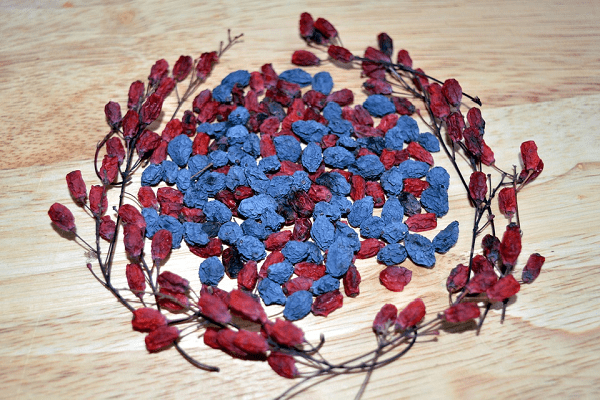
The medicinal properties of berries have been known since ancient times. It was they who were used during the absence of the pharmaceutical industry as food additives to nutrition, a source of vitamins, trace elements, pectin, and fiber.
Nature has made sure that the treatment also brings joy to a person. It is pleasant to be treated when the medicine is not only useful, but also tasty. So some plant fruits have not only an attractive taste, but also a quite tangible therapeutic effect, which doctors - herbalists use in their practice.
Regardless of what medicinal properties the berries have, they all contain fiber, which stimulates peristalsis and improves the transport properties of the intestines. For diabetics, the edible fruits of plants are a source of useful sugars.
Edible berries with a bitter taste are good digestive stimulants. The astringent taste of berries is a property provided by tanning agents that perform an antiseptic and protective function.
Medicinal berries:

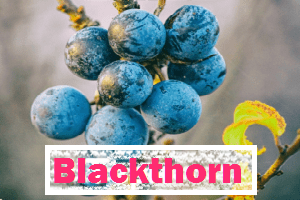
Prunus padus (Bird cherry) - a very common herb that can be useful for people suffering from gastrointestinal disorders such as diarrhea. The fruits of bird cherry are well known in pharmacology as a source of substances with tanning and astringent effects. The irritated gastrointestinal mucosa will receive a protective enveloping agent that will create a barrier to injuries from the food lump moving through the intestines, and the body will receive an additional portion of useful vitamins - Rutin and vitamin C, as well as organic acids (citric, malic). For people with impaired enzymatic functions of the digestive tract, the fruits of the Bird cherry will play the role of an irritating agent that stimulates fermentation. But it is not worth going over with the use of the fruits of Bird cherry, since in addition to useful medicinal components, they contain aldehydes, glycosides and a small percentage of hydrocyanic acid.
Prunus spinosa (Blackthorn) is a wild plant from the plum family, despite its tart taste, it is considered a fairly successful laxative. In addition to its positive effects on intestinal motility, Blackthorn is a source of vitamins A, group B, PP, E and a number of trace elements: potassium, sodium, calcium, magnesium, phosphorus, iodine and zinc. Blackthorn fruits have a protective effect with the participation of tannins, as well as an enveloping effect due to the content of a sufficiently large amount of pectin. But with damaged gastrointestinal tract ulcers and inflammatory foci (for example, with colitis, gastritis, ulcers and erosions) Blackthorn is unusable.

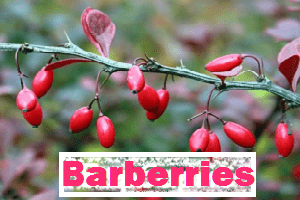
Berberis (Barberries) is a common ornamental plant, the fruits of which are usually used in cooking as a flavoring agent and a source of acids. But its medicinal properties are no worse than culinary ones. Barberries fruits are rich in vitamins and microelements, and its main therapeutic effect is an irritating effect on the digestive tract, which makes it a successful choleretic agent.
Mahonia aquifolium (American barberry, Berberis canadensis) is an ornamental plant, but it has fruits that are rich in pectin, sugars, vitamin C, tannins, and organic acids. The plant is native to the western states of the United States, East Asia and China, where it is widely used as a choleretic and diuretic. But the berries of Mahonia aquifolium are rich in alkaloids, which makes it unsafe in cases with gastrointestinal diseases, cholelithiasis, and dyspepsia. Mahonia aquifolium tends to cause intestinal upset, diarrhea, nausea, and is contraindicated in children and pregnant women.
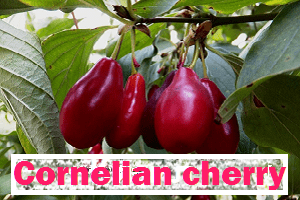

Cornus mas (Cornelian cherry) is a cultivated fruit that has rightfully won itself the first place among plants with a high content of vitamin C. But the medicinal significance of the Cornelian fruit does not end there, since the fruits of this plant, used for food, are able to regulate blood pressure and have a lowering effect.
Crataegus laevigata (Midland hawthorn) is a plant whose fruits are endowed with a variety of medicinal properties. The most common food effect of Midland hawthorn fruit is cardiotonic. Substances found in Midland hawthorn fruits are capable of affecting the work of the myocardium and the tone of the vascular wall, which is widely used in the treatment of various functional disorders of the heart muscle and blood vessels. The Midland hawthorn fruit, rich in pectin and tannins, can have an enveloping and astringent effect, which is useful for inflammation of the gastrointestinal tract mucosa.
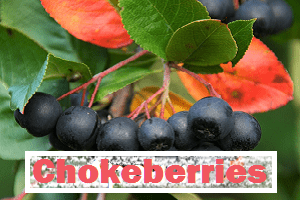
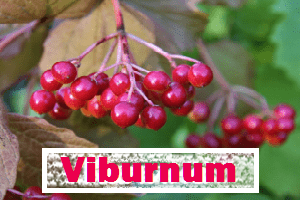
Aronia melanocarpa (Chokeberries) is a wild plant, abundant in fruits, the medicinal properties of which are not known to everyone. Chokeberries fruit is an indispensable product in anti-atherosclerotic diet. The large amount of pectin in the fruits of Chokeberries allows it to act as a therapeutic agent for gastrointestinal diseases associated with inflammatory processes. The fruit acids and vitamins of Chokeberries are beneficial for the overall health of the body.
Viburnum - medicinal value is available only in the berries of red viburnum (Viburnum with black berries is poisonous). The fruits of this plant are a depot of vitamin C. A high percentage of pectins and tannins has a beneficial effect on the inner surfaces of the digestive tract. For hypertensive patients, Viburnum is a godsend, as it tends to lower blood pressure, which makes it dangerous for hypotensive patients (sharp drops in pressure are possible, up to fainting). Viburnum is contraindicated for pregnant women, children and allergy sufferers due to the high likelihood of developing allergic reactions. Viburnum enhances blood clotting, which is dangerous with a tendency to thrombus formation.

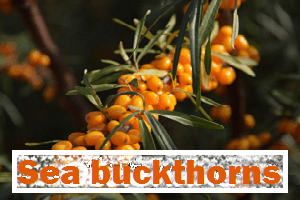
Morus, Morus alba, Morus nigra (Mulberries) is an unfamiliar plant in herbal medicine, but it has a wide range of medicinal properties. Mulberries of all colors (black, red, white) are recognized as antioxidants. Along with this property, Mulberries are considered antitumor, antibacterial and neuroprotective agents due to their high content of resveratrol, the presence of which in plants deserves attention as a substance that slows down the development of Alzheimer's disease. Mulberries are also rich in vitamin C and fiber, which are beneficial for the intestines.
Hippophae rhamnoides (Sea buckthorns) is a popular plant with fruits that have earned high recognition for their regenerative properties. Sea buckthorn juice and sea buckthorn oil are used for applications and ingestion with an all-encompassing effect on body tissues as a keratoplastic agent. Sea buckthorn fruits are a source of vitamin E, vitamin A, vitamins of group B. Treatment of burns, abscesses, frostbite, dermatological diseases, ulcers, erosion is the merit of Sea buckthorn berries.
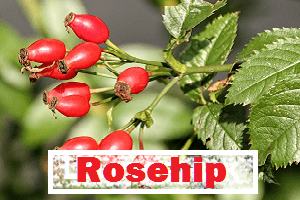
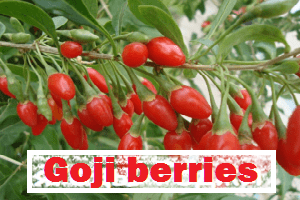
Fructus Rosae (Rosehip) is a recognized leader among medicinal plants in pharmaceuticals. Rosehips are rich in ascorbic acid, which is more abundant in rosehips than in its competitors, lemon and black currant. Rosehip is also a source of B vitamins, vitamin E, vitamin P, carotene. Rosehip fruits are popular for their high immunomodulating properties of local immunity, regenerative properties and as a means of strengthening the vascular wall.
Lycium barbarum (Goji berries) is a popular berry not only in medicine, but also in cosmetology. Vitamins C and rutin contained in berries help to strengthen the vascular wall. B vitamins, nicotinic acid, carotene, betaine strengthen the cell membrane (including skin and liver cells), restore tissue structures, and support the processes of rapid tissue regeneration.
Continuation >>>> Healing berries (Part 2)

Read

Read



























